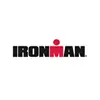When we think of nutrition, most of us think of fueling or recovering from training. But food plays another, equally as important role: that of injury care and prevention.
Injury can be obvious, as is the case with a fall, crash, or rolled ankle. It can involve wounds and skin abrasions, broken bones, tendons, ligaments and muscle damage. Injury can also be more subtle, manifested by an overuse strain, a tight hip, or plantar fasciitis.
Preventing injury requires a strong defense system. Workouts and races mean muscles fibers are constantly being broken down, bones are being remodeled and the immune system is being challenged. Once you are injured, your body needs extra energy to try and rebuild, adequate nutrients to remodel and repair, and antioxidants to help reduce inflammation associated with injury. Below is a simple prescription for using food to help prevent and treat illness and injury—and it's more than just an apple a day.
More: 5 Triathlon Nutrition Tips for Race Day
Nutritional Power Players: Calories, Fat, and Protein
Total calories: Muscles, ligaments and bones need energy in the form of calories to maintain optimal strength and structure. Simply eating enough is a fundamental basic for any athlete. Trying to scrape by on inadequate calories, or carry too little body fat for too long, will open you up to injury and illness. The same applies if you find yourself injured. Energy is needed to regenerate and strengthen cells.
Get it: As a rough guideline, women should shoot for 2,200 to 2,800 calories a day in heavy training (12 to 15 hours a week) and men for 3,000 to 4,000. In the off season, women should aim for 2,000 to 2,400 and men for 2,500 to 3,000. Rather than counting calories however, aim to eat enough to maintain your weight, or if you are trying to lose body fat, shoot for weight loss of around 0.5 kg per week to prevent muscle mass loss.
The Case for Fueling with Real Food
Fat: Fat is slowly shedding its bad reputation, and is being heralded as an essential component of a healthy diet. Fat enables proper structure and function of cells throughout the body—in particular, nerve cells. Fat is required to help maintain thermoregulation, support and protect vital organs and allows for the uptake of fat soluble vitamins including A, D, E and K. Omega 3 fats also help reduce inflammation.
Get it: Include oily fish such as salmon, mackerel, sardines and tuna for Omega 3s, as well as avocado, nuts and, flaxseeds and olive oil in your diet.
More: 3 Triathlon Nutrition Tips From Sarah Haskins
Protein: Adequate protein intake supports all the tissues in the body. Strained or sore muscles benefit, but so do bones and even wounds. Aim for at least 80 to 100 grams per day and spread out throughout the day.
Get it: Eggs, nuts, dairy, and animal proteins are all great sources of protein. Red meats in particular also provide iron, which is necessary to oxygenate cells and promote and speed recovery, but also are a rich source of the B vitamins and zinc required for energy and growth.
Recipe: Planked Alaska Salmon with Sol-I-Mar Rub
Back It Up: Micronutrients and Antioxidants
Antioxidants in supplemental form do not have the same protective effects as those consumed in real foods and in fact have been shown to delay the healing and adaptation response. In other words there is no substitute for a diet rich in fresh fruits and veggies.
Master Your Morning with a Better Breakfast
Vitamin A, C, and zinc: These components are needed for wound healing and collagen formation—the connective tissue that forms and determines the strength of ligaments and tendons—as well as immune function. Vitamin C is also a powerful immune system booster and plays a role in the period immediately following an injury.
Get it: For vitamin C think citrus and berries, bell peppers and other fresh vegetables. Leafy greens provide Vitamin A.
Calcium, and vitamins D and K: Stress fractures are not an uncommon injury among triathletes and runners. For maximizing bone strength or to speed healing, calcium, vitamin D and vitamin K are crucial.
More: Peter Reid's Triathlon Training Tips
Get it: Calcium is found in dairy as well as the small bones of canned fish, and some fortified foods. Vitamin D is availble in foods such as egg yolks and oily fish, while vitamin K is found in green leafy vegetables and fermented foods such as natto (Japanese fermented soybeans) and miso.
Flavanoids: These compounds give plant foods their different colors, and are known to reduce inflammation.
Get it: Cocoa, blueberries, garlic, spinach, turmeric and spices help provide flavanoids.
If you haven't already faced injury at one point in your triathlon career, the unfortunate truth is that you probably will. Without adequate preventative strategies (such as monitoring your training load and recovering right), injuries are just around the corner—especially for athletes constantly pushing themselves to reach their goals. Use your diet to keep injury, whether pesky or season-ending, away, and get back out on the course quickly.
More: Race Day Nutrition for Sprint and Olympic Triathlons
 Sign up for an IRONMAN.
Sign up for an IRONMAN.



